- Brands
- Alderdice Brassfounders
- Areta
- Balboa
- Betts
- CMG
- Davies Pumps
- Ebara
- ebmpapst
- Fasco
- Global Water
- Hascon
- HW Ventilation
- HydroGenie
- HydroPak
- Icar
- Jung
- Laing
- Marathon
- Mosswyn Air
- Multi-Wing
- Nicotra Gebhardt
- Onga
- Pentair
- Polyslab
- Portapac
- Shurflo/Jung
- SwitchGenie
- Tecnoplastic
- Telemecanique
- Tellarini
- Torin
- Watertec
- Watkins
- Wellmate
- Zeihl-Abegg
- Products
- Applications
- Where to Buy
- About
- Resources
- Contact
- Blog
Argon blog
Bringing you over 70 years of industry knowledge and advice for the pump,
fan and electric motor industry in New Zealand and the Pacific Islands.
Proven solutions through experience.
Subscribe
- Fan's (5)
- How-To (4)
- Booster Pumps (3)
- Water Pressure (3)
- Blowers (2)
- Davies Pumps (2)
- EBM-Papst (2)
- Multi-Wing (2)
- Pump Control (2)
- ZIEHL-ABEGG (2)
- Case Study (1)
- Engine Cooling (1)
- Engine Cooling Fans (1)
- HW Ventilation (1)
- Health & Safety (1)
- Hose, Valves & Fittings (1)
- MVI Series (1)
- Mosswyn Air (1)
- Nicotra (1)
- Pressure Tanks (1)
- Solar Pump (1)
- Solar Pump System Installation (1)
- Water Filtration (1)
Can I Increase Water Flow Pressure in my House?
%20LR.jpg)
Whether you need a water pump for a residential address or low-voltage pumps for outdoor settings, here at Argon, we're the leading specialists in pumps, electric motors and fans. We've got over 75 years' experience in the industry and are committed to sharing this knowledge with our community.
This month, we're going to shed a bit of light on a common plumbing issue that many of us will have experienced – low water pressure – and how to increase this water pressure potentially.
There's nothing worse than looking forward to a nice, hot shower, only to be met with a weak dribble of water coming out the faucet. Suppose you're experiencing the effects of low water pressure. In that case, this will often present itself in the form of an unsatisfying bathing experience and pose difficulties in household tasks such as washing the dishes, doing the laundry or trying to water the plants.
Luckily, there are ways that you can check and adjust the water pressure. And fortunately for you, low water pressure can often be corrected with a minimal investment of money or time. Read on for our top tips for sorting out your water flow pressure.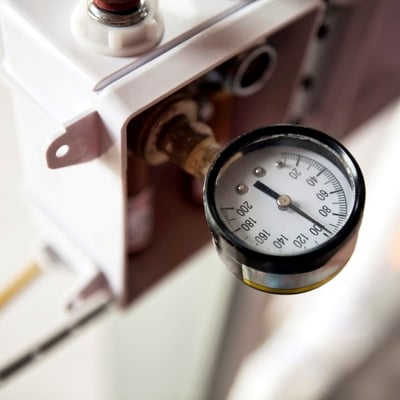
Establish the problem
First of all, you'll need to identify whether the problem is tied to a specific location or whether it is a problem throughout the property. This will tell you whether you need to increase the pressure at one faucet or whether you need to tackle your whole water system.
Secondly, you will need to identify whether you are on a self-supply system (drawing water from rainwater, bore etc.) or on town-supply.
Is your self-supply pressure to low?
There are two primary reasons for low water pressure in self-supply systems;
- The pump is undersized for the job
- Water flow restriction
Let's work through the simple steps to identify these issues.
Checkpoint #1 - Pressure Check
- Attach a pressure gauge to a hose tap at the furthermost point from the pump (image below)
- Ensure no one else is using the water. Run an inside tap for 10 seconds to allow the pump to complete one cycle. Check the gauge's pressure, which should be steady at a minimum of 40PSI - not rising or falling.
- If the pressure is steady, but below 40PSI, the pressure switch may need adjusting, or the pump may be undersized and needs upgrading.
- If the pressure is above 40PSI, move to the next checkpoint below.
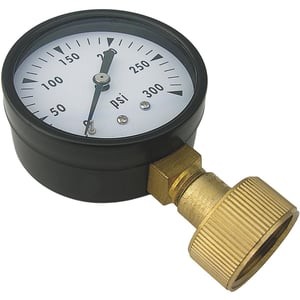
Checkpoint #2 - Checking normal usage pressure
- Attach a pressure gauge to a hose tap at the furthermost point from the pump (image below) This should display a minimum of 40PSI.
- Turn on the showers and 1-2 other taps and monitor the hose tape gauge. If the pump correctly specified for the job, 40PSI should be maintained. Maintained external pressure indicates internal pressure/flow restriction in the shower fittings. Some showers are fitted with flow restrictors which are simple to remove with a positive effect.
- If the pressure drops to 20-30PSI, the following points need checking;
- The filter system (if installed) may be clogged and need replacing.
- The supply pipe may be undersized for the volume required to maintain pressure.
- The pump may be undersized and need upgrading.
Once you have confirmed these checkpoints, contact the team at Argon to discuss the options for getting the water pressure you need.
Is your town-supply pressure to low?
There are four primary reasons for low water pressure in town-supply systems;
- Incoming pipe size too small
- Incoming pressure too low
- Pressure reducing valve installed limiting volume
- Flow restrictor installed
Checkpoint #1 - Incoming pipe size too small
Two key factors determine that the incoming pipe size is too small;
- Age and type of the incoming pipe. If this is an old, original galvanised pipe, corrosion and sediment buildup will have reduced the flow and pressure. Consider replacing this with a 32mm MDPE pipe.
- Distance between the street connection to the property. The greater the distance, the more significant the pressure drop is. Consider upgrading to a larger diameter MDPE pipe to increase flow and pressure.
Checkpoint #2 - Incoming pressure too low
Another potential cause of low water pressure is low pressure coming from the town supply. Low-pressure town supply is common in the dryer months of the year when demand is high.
Call your local water department and ask them to check the water pressure for your street. They can run a pressure test at no cost to you, and this will confirm whether the pressure being delivered to your home is satisfactory. If they find no issue, then it's probably a problem with the water supply at your property.
Checkpoint #3 - Pressure-reducing valve
Some properties have a supply pressure reducing valve installed to protect the house system from excessive water pressure. You're usually looking out for a conical-shaped valve next to the water metre. However, this device may be undersized for the application and restricting the flow or volume of water coming through at the correct pressure.
Contact your plumber to have this device checked and upgraded to a larger unit if required.
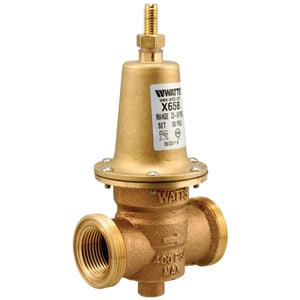
Checkpoint #4 - Flow restrictor installed
Some properties have a flow restrictor installed. These restrictors are designed to conserve water and reduce your hot water heating and water bill. These are common in modern showerheads and mixer taps. Removing these will have a positive effect on increasing water pressure.
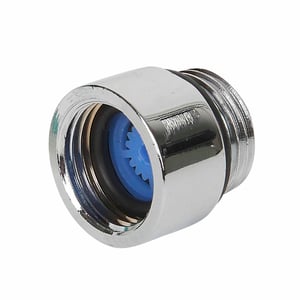
Install a pressure booster
If other methods have failed to increase the water pressure, your next option is to hire a licensed plumber to install a water pressure booster pump. Although they are compact, these powerful electric pumps are installed into the water supply line where they turbo-charge any incoming pressure to raise it to the appropriate level. They come in a considerable number of styles and sizes and vary in price. If you're looking for an all-in-one water treatment and supply system for your home, check out the Davies Pumps HydroPak-XTRA on our website.
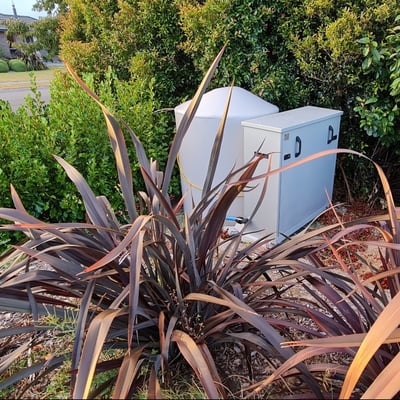
Hopefully, these tips will come in handy if you run into any trouble with low water pressure in your home or property. If you need any additional information or help, feel free to get in touch with us, and our friendly and knowledgeable team will be happy to assist you.

